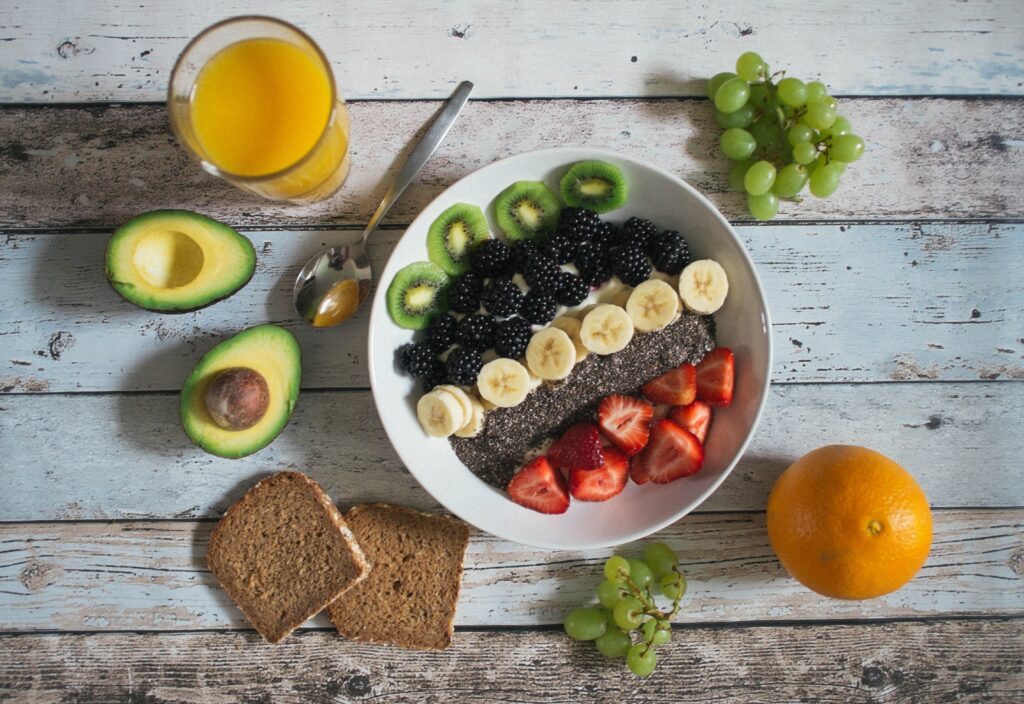In our busy world, intermittent fasting has become a popular way to stay healthy. Many people are interested in it because it has proven benefits. If you’re new to intermittent fasting and need practical advice to start, you’re in the right place. While I have a comprehensive article on intermittent fasting available on my website for those who want an in-depth understanding, this blog post will focus exclusively on providing you with actionable tips and guidance to kickstart your Intermittent Fasting Journey.
Is Intermittent Fasting Right For You? Weighing the Pros & Cons
Preparation Phase
Before starting intermittent fasting, it’s essential to prepare both your body and mind for this transformative journey. This phase sets the stage for a smoother transition into fasting and increases your chances of long-term success. Here are key steps to consider during the preparation phase:
Educate Yourself
- Start by reading up on the basics of intermittent fasting. Understanding the different methods and their potential benefits will help you make informed choices. I provide a list of related studies at the end of this blog post. Check it out!
Consult a Healthcare Professional
- It’s crucial to consult with a healthcare professional or registered dietitian before beginning any fasting regimen, especially if you have underlying health conditions or are taking medication.
Set Clear Goals
- Determine why you want to try intermittent fasting. Is it for weight management, improved metabolic health, or other reasons? Having clear goals will keep you motivated.
Choose the Right Method
- Consider which intermittent fasting method aligns with your lifestyle and preferences. Common methods include the 16/8, 5:2, and Eat-Stop-Eat.
Gradually Adjust Meal Timing
- Instead of abruptly starting your chosen fasting method, ease into it by gradually adjusting your meal timing. For instance, if you plan to follow the 16/8 method, start by shortening your eating window by 30 minutes each day until you reach the desired fasting duration.
Stock Up on Nutrient-Dense Foods
- Prepare your kitchen by stocking up on nutrient-dense foods like fruits, vegetables, lean proteins, whole grains, and healthy fats. These will be essential for nourishing your body during eating periods.
Plan Your Meals
- Explore healthy recipes, including those on my website, that align with intermittent fasting. Plan balanced meals that provide the nutrients your body needs while supporting your fasting goals.
Get Adequate Sleep
- Prioritize getting enough quality sleep each night. Sleep plays a vital role in overall health and can impact your ability to adhere to your fasting schedule.
In the following sections, we will explore in detail the practical tips for different intermittent fasting methods to guide you further.
Practical Tips for Success
- Listen to Your Body: Pay attention to hunger cues. If you feel excessively hungry or unwell, it’s okay to adjust your fasting schedule.
- Stay Consistent: Try to stick to your chosen fasting method consistently, as your body tends to adapt over time.
- Stay Flexible: Life can be unpredictable. If you have a special occasion or a day when fasting isn’t feasible, don’t stress! Resume your fasting schedule the following day.
- Track Your Progress: Keep a journal to record what you eat, when you eat, and how you feel afterward. This can help you identify areas for improvement.
- Seek Support and Accountability: Inform friends and family about your fasting journey so they can offer support and understanding. Having a support system can make a significant difference in your success.
- Manage Stress: Incorporate mindfulness techniques into your daily routine, such as meditation or deep breathing exercises. These practices can help manage stress and cravings during fasting periods.
Remember, intermittent fasting is a flexible approach, and there is no one-size-fits-all solution. Experiment with these tips, tailor them to your preferences, and make adjustments as needed to find what works best for you. The ultimate goal is to create a sustainable and enjoyable fasting routine that supports your journey to a healthier lifestyle.
Staying Hydrated During Intermittent Fasting
Proper hydration is crucial for overall health, and it becomes especially important when you’re practicing intermittent fasting. Fasting periods can sometimes lead to dehydration if not managed correctly.
Water is Your Best Friend:
- During fasting periods, water should be your go-to beverage. It’s calorie-free, won’t break your fast, and helps stave off hunger. Aim to drink at least 8-10 glasses of water throughout the day.
Herbal Teas:
- Herbal teas like chamomile, peppermint, or green tea are excellent choices to keep you hydrated and provide some flavor variety without adding calories.
Black Coffee (In Moderation):
- Black coffee is another calorie-free option during fasting, and its caffeine content can help suppress appetite. However, don’t overdo it, as excessive caffeine can lead to dehydration.
Sparkling Water:
- If you’re looking for something fizzy, opt for sparkling water. It can provide a refreshing change without any calories or artificial sweeteners.
Electrolytes Matter:
- Especially during longer fasts or hot weather, consider adding a pinch of salt to your water. This can help maintain electrolyte balance and prevent muscle cramps.
Avoid Sugary or High-Calorie Drinks:
- Steer clear of sugary drinks, fruit juices, and high-calorie beverages like soda or energy drinks during fasting hours. These can spike your blood sugar and negate the benefits of fasting.
Coconut Water (In Moderation):
- If you need an electrolyte boost and prefer a natural option, coconut water is a low-calorie choice. Just be mindful of the calorie content if you’re in a strict fasting window.
Pay Attention to Your Body:
- Listen to your body’s signals for thirst. Dehydration can sometimes masquerade as hunger, leading to unnecessary food consumption. When you feel thirsty, reach for water first.
Hydrate Before and After Fasting Periods:
- Make it a habit to drink a glass of water before starting your fasting period and another when breaking your fast. This ensures you begin and end each fasting period well-hydrated.
Monitor Urine Color: A simple way to check your hydration level is to monitor the color of your urine. Light, pale yellow urine indicates good hydration, while dark yellow or amber-colored urine may suggest dehydration.
Overcoming Challenges in Your Intermittent Fasting Journey
While intermittent fasting offers numerous health benefits, it’s not without its challenges, especially when you’re just starting. However, with the right strategies and mindset, you can overcome these hurdles and make intermittent fasting a sustainable part of your healthy lifestyle. Here’s how to conquer common challenges:
1. Dealing with Hunger:
Solution: Stay hydrated with water, herbal tea, or black coffee during fasting hours to curb hunger. It’s also helpful to keep yourself busy with work, hobbies, or light activities to distract from food thoughts. Over time, your body may adjust, and hunger pangs may become less intense.
2. Sugar and Carb Cravings:
Solution: Opt for whole, fiber-rich foods that keep you feeling full for longer. Include complex carbohydrates like whole grains and incorporate healthy fats and proteins into your meals. Additionally, choose low-sugar or sugar-free snacks if needed.
3. Low Energy Levels:
Solution: Ensure you’re getting enough restful sleep, as fatigue can often result from poor sleep quality. Maintain balanced meals when breaking your fast to provide sustained energy. Consider gentle exercise like walking or yoga to boost energy levels.
4. Social and Lifestyle Challenges:
Solution: Communicate your fasting schedule with friends and family so they can support your efforts. When socializing, focus on the social aspects rather than food. You can also schedule your eating window to align with social gatherings whenever possible.
5. Irritability and Mood Swings:
Solution: Practice stress-reduction techniques like meditation, deep breathing, or mindfulness to manage mood swings. Ensure you’re eating a balanced meal when you break your fast to stabilize blood sugar levels.
Monitoring Progress
Keeping track of your progress during your intermittent fasting journey is essential to ensure you’re meeting your goals and making the necessary adjustments for success. Here are some effective ways to monitor your progress:
Keep a Fasting Schedule Journal: Record the details of your fasting schedule, including start and end times, fasting method (e.g., 16/8, 5:2), and any variations you make. This journal can help you stay consistent and identify patterns in your fasting routine.
Track Eating Habits: Maintain a food diary to record what you eat during eating windows. Note portion sizes, macronutrient composition, and the quality of your meals. This can help you make informed choices and ensure balanced nutrition.
Body Measurements: Regularly measure key metrics like your weight, waist circumference, and body fat percentage. Keep a log of these measurements to track changes over time. Remember that fluctuations are normal, so look for trends rather than daily changes.
Progress Photos: Take “before” photos when you start your intermittent fasting journey and periodically capture new images. Comparing these photos visually can provide motivating evidence of your progress.
Energy and Mood Levels: Note your energy levels and mood throughout the day. Positive changes in energy and mood can be indicators of improved health and well-being.
Hunger and Cravings: Keep a record of your hunger levels and any cravings you experience during fasting periods. Over time, you may notice reduced hunger and fewer cravings as your body adapts to the fasting routine.
Performance in Workouts: If you engage in physical activity, track your workout performance. Monitor improvements in strength, endurance, or flexibility as a result of intermittent fasting and other lifestyle changes.
Fasting Duration: Track the duration of your fasting periods. As you become more accustomed to intermittent fasting, you may naturally extend fasting hours or experiment with longer fasts.
Sleep Quality: Record your sleep patterns, including duration and quality of sleep. Intermittent fasting may have a positive impact on sleep for some individuals.
Health Metrics: Schedule regular check-ups with your healthcare provider to monitor health metrics like blood pressure, cholesterol levels, and blood sugar. Positive changes in these markers can be strong indicators of improved health.
Feedback from Your Body: Listen to your body’s signals. If you consistently feel more energetic, less hungry, or experience other positive changes, take note of these subjective improvements.
Set Milestones and Goals: Establish specific milestones and goals for your intermittent fasting journey. This could include weight loss targets, fitness achievements, or health improvements. Regularly assess your progress against these goals.
Use Tracking Apps and Tools: Consider using apps or wearable devices to monitor your fasting and eating patterns. Many apps offer features for tracking meals, fasting duration, and health metrics.
Seek Professional Guidance: If you’re unsure about your progress or need expert advice, consult a healthcare professional or registered dietitian. They can interpret your data and provide personalized recommendations.
Remember that intermittent fasting is a long-term commitment, and progress may not always be linear. Be patient and stay motivated by focusing on the positive changes you observe.
Always consult your doctor or healthcare professional before starting intermittent fasting to ensure it’s safe for your health. If you encounter any issues during your journey, seek medical advice promptly. Your well-being is our priority.
Combining Intermittent Fasting with Healthy Eating
One of the key factors in maximizing the benefits of intermittent fasting is to pair it with a balanced and nutritious diet. In this section, we’ll explore how you can combine intermittent fasting with healthy eating practices to support your overall well-being and achieve your health goals:
Prioritize Nutrient-Dense Foods:
- During your eating windows, focus on consuming nutrient-dense foods that provide essential vitamins, minerals, and antioxidants. Incorporate plenty of:
- Fruits and vegetables: These are rich in fiber, vitamins, and antioxidants.
- Lean proteins: Include sources like chicken, turkey, fish, tofu, and legumes.
- Whole grains: Opt for whole grains like quinoa, brown rice, and oats for sustained energy.
- Healthy fats: Include sources like avocados, nuts, seeds, and olive oil.
⇓⇓⇓⇓⇓⇓⇓⇓⇓⇓⇓⇓⇓⇓⇓⇓⇓
A Nutrient-Packed Plant Power Bowl Recipe
Fresh and Flavorful: Broccoli Rice Bowl with Salmon
Chili sin Carne in Minutes: Instant Pot Recipe
Quinoa Salad-Simple and Healthy Recipe
Balanced Meals:
- When breaking your fast, aim for balanced meals that include a mix of macronutrients:
- Protein: Helps with muscle maintenance and satiety.
- Carbohydrates: Provide energy and fiber.
- Healthy fats: Support overall health and help you feel satisfied.
Avoid Processed Foods:
- Minimize or eliminate highly processed and sugary foods. These can lead to blood sugar spikes and crashes, which may undermine the benefits of fasting. Snack on this ⇓
Hydration is Key:
- Stay hydrated with water, herbal teas, or black coffee during fasting hours. Proper hydration can help manage hunger and support overall well-being.
Mindful Eating:
- Practice mindful eating by savoring each bite, eating slowly, and paying attention to hunger and fullness cues. This can help prevent overeating and improve digestion.
Incorporate Fiber:
- Fiber-rich foods like fruits, vegetables, and whole grains can help you feel full and satisfied, reducing the likelihood of overeating during eating windows.
⇓⇓⇓⇓⇓⇓⇓⇓⇓⇓⇓⇓⇓⇓⇓⇓⇓
Millet and Coconut Pumpkin Porridge Recipe
Bowl of Goodness: Baked Salmon with Broccoli & Shiitake
Prawns and Homemade Pesto Pasta Recipe
Lentil Salad with Smoked Chicken
Prep Healthy Meals:
- Plan your meals in advance, and prepare healthy options to have on hand. This makes it easier to stick to your fasting schedule and make nutritious choices.
Experiment with Different Foods:
- Variety is key to a well-rounded diet. Experiment with different recipes and ingredients to keep your meals interesting and enjoyable.
Watch Sugar Intake: Be cautious of added sugars, which can be found in many processed foods. Opt for natural sweeteners like honey or maple syrup when needed.
Supplements: Consider consulting a healthcare professional to determine if you need any supplements, such as vitamins or minerals, to support your specific dietary needs.
Monitor Your Body’s Response: Pay attention to how your body responds to different foods. Everyone is unique, so adjust your diet based on how you feel and your health goals.
By combining intermittent fasting with a healthy and balanced diet, you can enhance the potential benefits of both practices. Remember that it’s essential to choose an eating pattern that aligns with your lifestyle and preferences. A well-rounded diet, paired with intermittent fasting, can support your journey toward improved health, weight management, and overall wellness.
Always consult your doctor or healthcare professional before starting intermittent fasting to ensure it’s safe for your health. If you encounter any issues during your journey, seek medical advice promptly. Your well-being is our priority.
REFERENCES:
Intermittent fasting: The positive news continues (by Harvard)
4 intermittent fasting side effects to watch out for
Intermittent fasting: Fad or valid weight-loss solution? (by Mayo Clinic)
Stay Healthy! Stay Positive!










